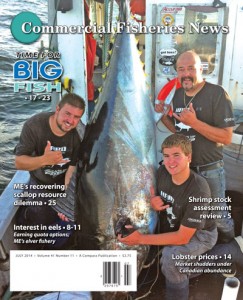SEATTLE, WA – In March, researchers announced that the disastrous BP Deepwater Horizon oil spill in the Gulf of Mexico four years ago had the same devastating effects on the embryonic stage of large pelagic fish, including bluefin tuna, as those suffered by Pacific herring and pink salmon after the 1989 Exxon Valdez spill in Alaska – heart failure, malfunctions, and deformations even at low concentrations of crude oil.
The study, which was part of the National Oceanic and Atmospheric Administration’s (NOAA) Natural Resource Damage Assessment (NRDA) for restoration of the Gulf after the 2010 spill, was published in the Proceedings of the National Academy of Sciences. It was one of two recently published studies that pinpoint how the spill impacted Gulf fisheries. As co-trustee for NRDA, NOAA has been conducting toxicity tests on 20 species of fish and invertebrates since the disaster.
Nathaniel Scholz and John Incardona, together with their research group at the NOAA Northwest Fisheries Science Center in Seattle, have been working on this issue for a little more than a decade, building on earlier work by NOAA scientists from the Alaska Fisheries Science Center that began in the 1990s in the aftermath of the Exxon Valdez spill.
Their work revealed a common set of developmental defects across fish species, indicating that crude-oil impacts are “highly conserved,” which means that even species that have evolved separately over millions of years are affected in essentially the same way.
And, according to the study, there are implications for vulnerable spawning areas near oil and gas drilling operations.
The Deepwater Horizon oil-drilling platform was located in a prime spawning area for multiple pelagic species in the northern Gulf of Mexico when it blew…

Read the rest and much, much more in the July issue of Commercial Fisheries News.
Read online immediately and download for future reference.







 Updating...
Updating...